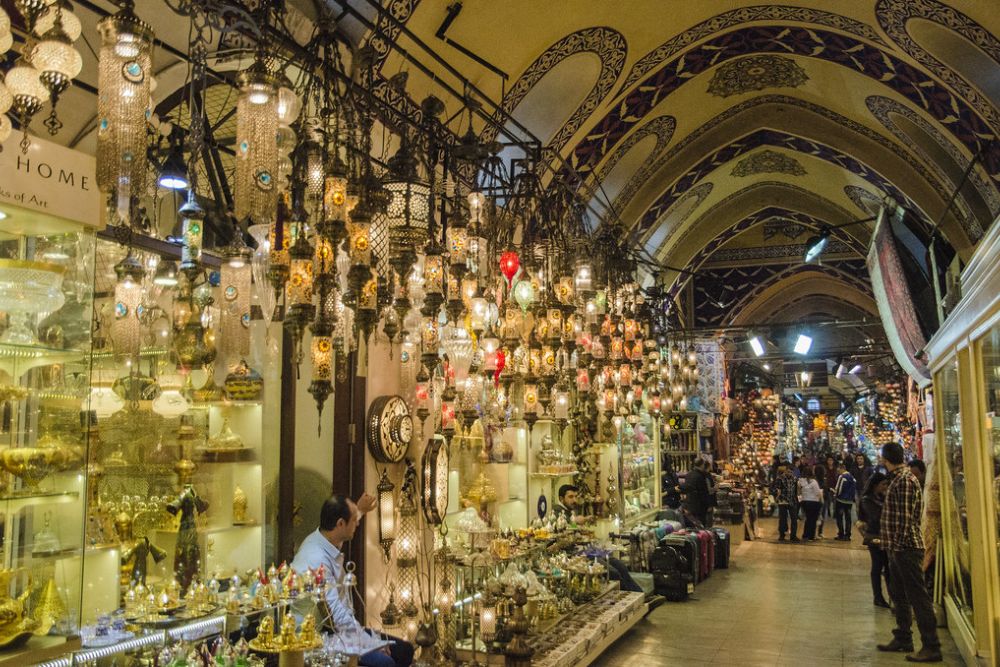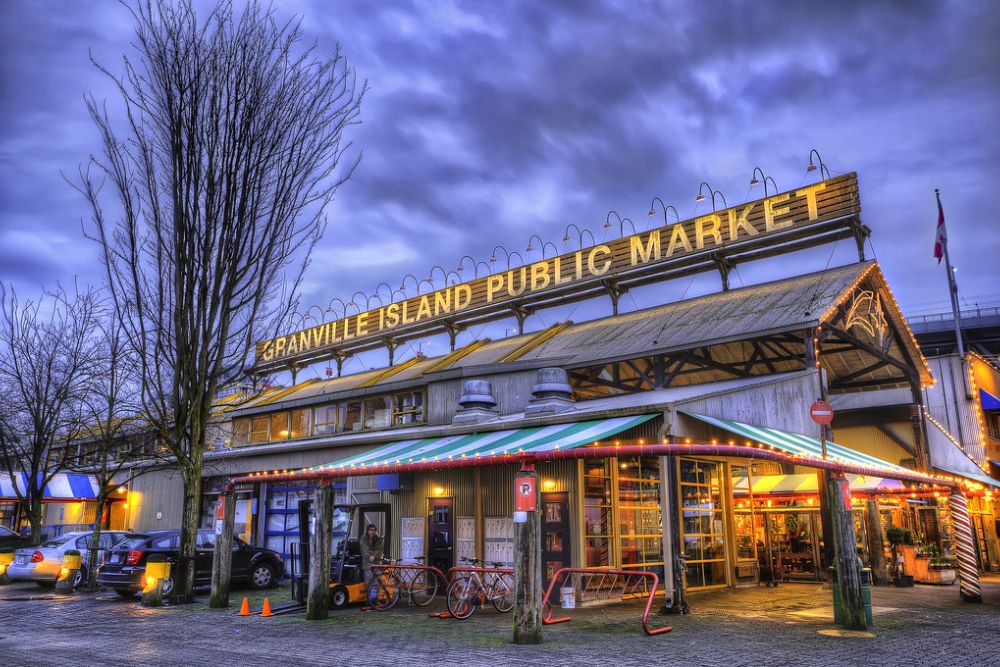Step inside some of the world’s most remarkable markets, and you’ll find yourself surrounded by centuries of history. These aren’t your typical shopping centers—they’re architectural treasures that have been feeding communities and fostering commerce for generations. From medieval halls to converted train stations, these spaces blend the old with the everyday, creating shopping experiences that feel almost magical.
Here is a list of 20 traditional markets that call historic buildings home, each offering its unique blend of heritage and commerce.
Mercado de San Miguel

Madrid’s glass and iron marvel opened in 1916 and remains one of the city’s most beloved food destinations. The delicate metalwork and soaring ceilings create an airy cathedral dedicated to Spanish cuisine.
Vendors here serve everything from fresh oysters to aged cheeses, turning it into a gourmet playground under a historic canopy.
Borough Market

London’s Borough Market has occupied its spot near London Bridge for over 1,000 years, although the current Victorian buildings date back to the 1850s. The green-painted iron framework and brick arches house some of Britain’s finest food producers.
Walking through is like stepping into a Dickens novel, complete with the aroma of fresh bread and artisanal coffee wafting through the air.
Like Travel Pug’s content? Follow us on MSN.
Reading Terminal Market

Philadelphia’s Reading Terminal Market sits beneath what was once the world’s largest single-span train shed when it opened in 1893. The soaring steel and glass roof still echoes with the ghosts of steam engines, while below, Amish farmers sell their produce alongside urban food artisans.
It’s like having a slice of rural Pennsylvania embedded in the heart of a bustling city.
Grand Bazaar

Istanbul’s Grand Bazaar, built in the 15th century, sprawls across 61 covered streets under a series of domed roofs. This labyrinthine marketplace has been the beating heart of commerce between Europe and Asia for over 500 years.
The hand-painted ceilings and marble columns create an atmosphere that makes every shopping trip feel like an adventure through time.
La Boqueria

Barcelona’s La Boqueria market dates back to the 13th century, although its current modernist roof was added in the early 1900s. The colorful mosaic entrance and steel framework house stalls overflowing with Mediterranean produce.
The combination of Gothic foundation stones and Art Nouveau ironwork creates a uniquely Catalan shopping experience.
Like Travel Pug’s content? Follow us on MSN.
Quincy Market

Boston’s Quincy Market, built in 1826, stretches for over 500 feet in a magnificent Greek Revival granite building. The central dome and classical columns give it the appearance of a temple dedicated to commerce.
Inside, the mix of traditional New England fare and modern eateries creates a seamless bridge between America’s colonial past and its contemporary culinary scene.
Marché des Enfants Rouges

Paris’s oldest covered market, dating from 1628, got its name from the red uniforms worn by orphans at a nearby hospital. The timber frame and slate roof have sheltered Parisian shoppers for nearly four centuries.
The intimate scale makes it feel more like a neighborhood secret than a major tourist spot.
Covent Garden Market

London’s Covent Garden began as a fruit and vegetable market in the 1660s before moving into its current Victorian building in 1830. The elegant iron and glass roof covers what was once the social and commercial hub of London.
Today, the space maintains its theatrical atmosphere with street performers and boutique shops filling the historic halls.
Like Travel Pug’s content? Follow us on MSN.
Rialto Market

Venice’s Rialto Market has been located near the famous Rialto Bridge since 1097, with the current buildings dating back to the early 20th century. The arcade-style architecture reflects centuries of Venetian trading tradition.
Shopping here means joining a continuous stream of commerce that has flowed for nearly a millennium.
Central Market Hall

Budapest’s Great Market Hall, completed in 1897, showcases stunning Hungarian Art Nouveau architecture with its colorful Zsolnay ceramic roof tiles. The steel framework was revolutionary for its time, creating vast open spaces under soaring Gothic Revival arches.
It feels like a cathedral devoted to Hungarian cuisine and folk crafts.
Tsukiji Outer Market

Tokyo’s outer market buildings date back to the post-war reconstruction period and retain the architectural style of mid-century Japanese commercial districts. These low-slung concrete and wood structures create an intimate maze of narrow alleys.
Walking through feels like stepping into old Tokyo, where tradition and modernity blend seamlessly.
Like Travel Pug’s content? Follow us on MSN.
Adelaide Central Market

South Australia’s Central Market has been operating from its current Victorian building since 1869, making it one of the oldest markets in the Southern Hemisphere. The high timber ceilings and brick walls create an ideal acoustic environment for the lively chatter of vendors and customers.
The architecture reflects the confidence of colonial-era Adelaide while serving modern multicultural cuisine.
Mercado Central

Santiago’s Central Market, built in 1872, features an impressive cast-iron structure imported from England during Chile’s nitrate boom. The prefabricated metal framework creates soaring spaces that showcase the building’s industrial heritage.
The combination of Victorian engineering and Chilean seafood produces an unexpectedly elegant dining environment.
English Market

Cork’s English Market has occupied its current Victorian building since 1788, though the ornate roof was added in the 1850s. The red-brick exterior and cast-iron interior details reflect Ireland’s 19th-century prosperity.
The intimate scale and traditional Irish fare make it feel like the country’s culinary heart.
Like Travel Pug’s content? Follow us on MSN.
St. Lawrence Market

Toronto’s St. Lawrence Market operates from a building that has served the city since 1845, although the current structure dates back to 1904. The red-brick Romanesque Revival architecture gives it the appearance of a civic building, which it essentially is.
The clock tower and arched windows make it look more like a town hall than a marketplace.
Fremantle Markets

Perth’s Fremantle Markets have called their Victorian building home since 1897, originally serving as a town hall. The limestone facade and high ceilings create an unexpectedly grand setting for weekend shopping.
The building’s civic origins give it a formal elegance that elevates the market experience beyond simple commerce.
Granville Island Public Market

Vancouver’s Public Market is located in a converted early 1900s industrial building on what was once a manufacturing island. The heavy timber construction and concrete floors reflect its industrial past while housing some of Canada’s finest artisanal food producers.
The transformation from factory to market perfectly captures Vancouver’s evolution from a resource town to a cultural center.
Like Travel Pug’s content? Follow us on MSN.
Danilovsky Market

The Danilov Market of Moscow shifted into a refurbished building from the early 1900s, with many architectural details that remain true to pre-revolutionary Russian style. The arcaded windows and ornamental brick create a pre-Soviet ambience while shopping here is tantamount to experiencing Moscow just before its transformation into a Soviet state.
George Market

Edinburgh’s George Market operates from converted Georgian townhouses that date from the late 18th century. The elegant stone facades and tall windows reflect the refined taste of Scotland’s Age of Enlightenment.
The domestic scale of the architecture makes shopping feel like visiting a series of grand homes rather than a commercial space.
Phoenix Public Market

Phoenix’s Public Market is located in a restored 1920s warehouse in the downtown core, representing the city’s brief but significant agricultural history. The brick construction and steel-frame windows reflect the utilitarian architecture of early Arizona commerce.
This market offers a tangible connection to Phoenix’s pre-air conditioning era, when it was still a farming community.
Like Travel Pug’s content? Follow us on MSN.
Markets as Living History

These historic market structures manifest the establishment of commerce and community under the aegis of architecture. Each structure bears testimony to the rhythm of its city’s journey, from medieval trading posts to industrial powerhouses to contemporary cultural centers.
The fact that they continue to serve their original purpose while adapting to contemporary needs proves that good architecture transcends time. These markets remind us that the best historic preservation happens when buildings remain alive and useful, not merely preserved as museums.
More from Travel Pug

- 20 Best Beach Towns in the Carolinas
- 13 Destinations Where Tourists Regularly Regret Their Trip
- 20 Destinations That Are More Magical Without an Itinerary
- 20 Underrated Adventures That Belong on Your Travel List
- 20 Cities Where You Should Just Wing It, No Planning Required
Like Travel Pug’s content? Follow us on MSN.
